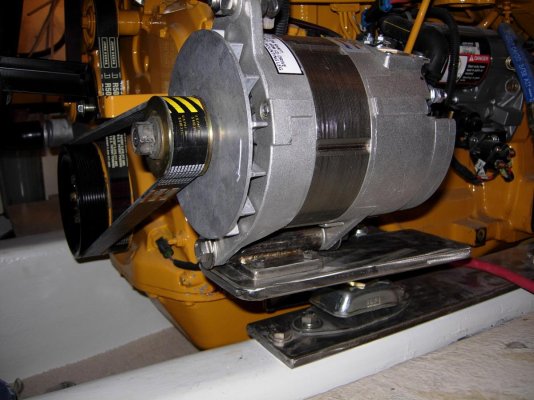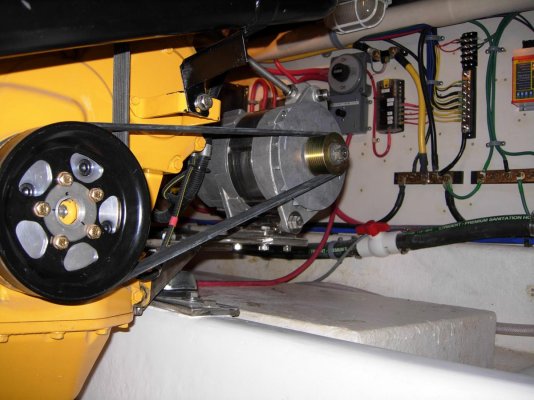I tired of having to run a 7.5KW generator for 6 hours a day on anchor AND STILL HAVE LOW BATTERIES.
For load on the batteries..... microwave oven as needed, 2 32" HD TVs, toaster, 2 laptops, lights plus an 8.3cuft fridge with self defrost and an interior light not found in marine fridges.
Seems odd. At anchor, we usually only ran the genset 4 hrs/day... to coincide with morning and evening cooking times... with 600 Ah of AGM battery in two banks... two fridges... and a measly little ol' 40 amp charger.
I wonder if that self-defrost feature (which we would probably like) is a serious power hog? I presume the interior light only comes on when the door is open? (But how would we know?)

fog, I don't think inverters output DC

Are you talking about an inverter charger? That's just a charger when it has AC input.
Notwithstanding our fairly decent charging results over the years... I wanted even more battery capacity if possible, and that in turn meant more/better charging capability. And we wanted an inverter of some sort to make quiet morning coffee and afternoon popcorn.
Turned out an inverter/charger on one of our battery banks could be a way to solve part of that... and increasing bank size should solve the other part of it. We installed the inverter/charger (70 amp) late last August -- so not much experience with it yet -- but it acts promising. Doing that meant we could devote the original 40 amp charger to one 300 Ah battery bank, use the 70A charger for the other 300 Ah bank...
And next, we'll change the 3xG31 dual-purpose bank -- the one serviced by the 70A inverter/charger -- to a 440 Ah deep cycle bank, with 4x GCs in series/parallel. That's space constrained, or I'd consider an even larger bank.

Bottom line, I'm hoping, is we get the inverter (already working) and more capacity at sorta-kinda the same time.
FWIW, even though I'd been thinking on that for several years... the installation location for the inverter was one hang-up. The other was about space constraints where the batteries live. Once I solved those, everything else could proceed apace.
And the two chargers, one 40A and one 70A, I think make better use of our 8 Kw genset anyway. Otherwise, when we're not running the ACs (aircons), we don't have much to put a decent load on it... except for probably the water heater, and even that's not much after the initial start-up.
I probably can't increase the size of the other bank, due to space limitations... but if the older (original) 40A charger craps out, I'd likely increase the size of that, too.... also to put a better load on the genset, and to take better advantage of the AGMs.
-Chris

 50A/250AH. Just have not prioritized upgrades yet there hence the question.
50A/250AH. Just have not prioritized upgrades yet there hence the question. 




